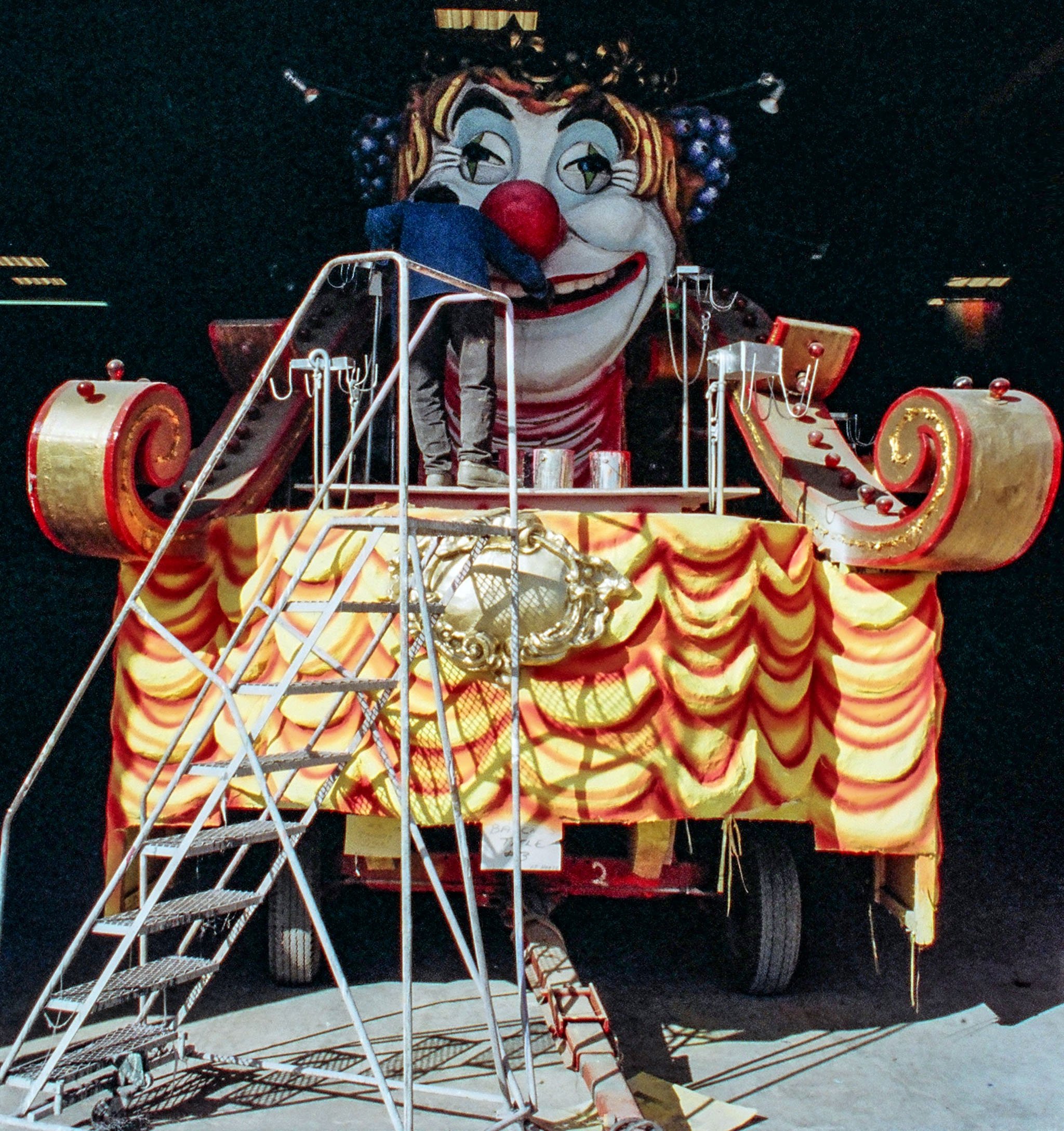Mardi Gras World (also known as Blaine Kern's Mardi Gras World, MGW) is a tourist attraction located in New Orleans. Guests tour the 300,000 square foot working warehouse where floats are made for Mardi Gras parades in New Orleans. Mardi Gras World is located along the Mississippi River, next to the Morial Convention Center. Their events venue, the River City Complex, also hosts festivals, weddings, private parties and corporate events.
Wikipedia
Giant fiberglass doubloon with the logo of the Krewe of Argus founded in 1972.
Mardi Gras Doubloons are Mardi Gras throws shaped like coins that commemorate various Mardi Gras Krewes. They are typically made of aluminum and are thrown from floats in carnival parades.
Argus was named after the God of Greek Mythology, Argus, the all-seeing with one hundred eyes. Argus observed Zeus cheating on his wife, The Goddess Hera. Zeus ordered Hermes to cut the head off of Argus. Hera, seeing this, took the hundred eyes off of Argus and put them on the tail of her peacock, where they remain today. That is why the peacock is the logo of the Krewe of Argus.
source: kreweofargus.com
Queen Kong was introduced in 1973. The mate of King Kong, who debuted as a float presented by the Crew of Bacchus the previous year.
This image only. Photo credit: Paul Mannix from Wikipedia Commons/The Leviathan float, one of the Crew of Orpheus’ floats. Slight Photoshop changes made to image.
Update on blog entry: Blaine Kern’s obituary in the NYT by Steven Kurutz, July 2020.
Blaine Kern, Architect of Lavish Mardi Floats, Dies at 93
Blaine Kern, who helped turn Mardi Gras in New Orleans into a huge event known around the world, most notably through the innovative and spectacular parade floats he designed and built, died on June 25 at his home in the city. He was 93.
Mr. Kern supersized Mardi Gras with this floats, but he also enlarged the celebration by promoting it tirelessly and democratizing it. In the mid-19th century, Mardi Gras, with its parades and social balls, was the province of the well-off white men who controlled New Orleans’s business and society. To get a parade permit, an organization needed to stage more than a dozen floats, which were expensive to build, store and insure.
“What Blaine did was, he created a pool of rental floats so many groups could participate without being a blue blood or having a zillion dollars” said Arthur Hardy, publisher of the annual Mardi Gras Guide. Mr. Kern was “one of the most significant people in the whole history of the event”.











